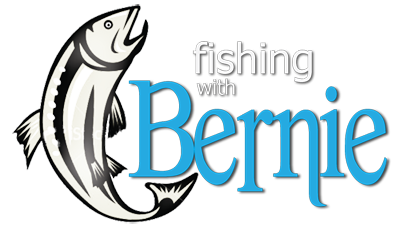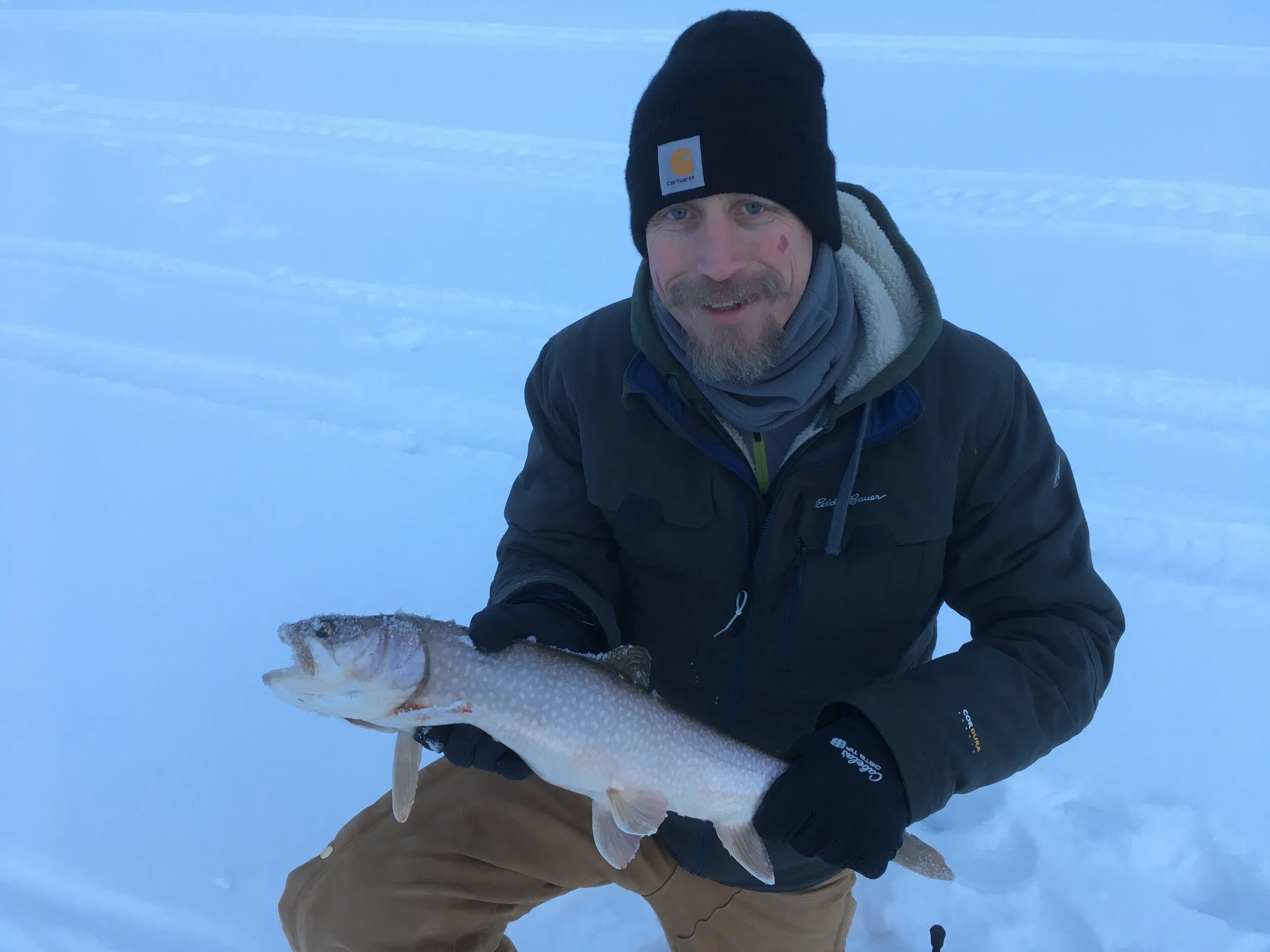The temperature outside is forecasted for 42 degrees with no wind and a high sun. I am getting dressed for a day of ice fishing on Lake Granby. Meeting my clients on the boat ramp I quickly realize I had overdressed for the day.
We headed across the lake to a small point about 60 feet deep. After drilling a couple holes, I rig a 3/8 oz jig and tip it with some meat; Bill dropped it down the hole and started a routine lift and drop jigging motion. Meanwhile Bob was preparing to start when Bill reared back and set the hook on a Lake Trout. After a short battle a 19" fish comes though the hole. Bob starts grumbling something about Bill getting the first fish as he drops his jig in the water. It never hit bottom and Bob sets the hook on a fish that does not move. He tries to lift the fish but it decides to start swimming another direction. After a short tug of war Bob starts to gain ground (or should I say line), the fish takes a couple of good line burning runs then gets tired and his head starts to poke through the hole. We land it take some pictures and carefully release it. This scene replays itself many times this warm and sunny day.
When the lakes along the Front Range start to open up, people tend to forget about ice fishing. The pressure drops and the fishing starts to get better every week. Some of our early season spots start to produce again and unlike early season you need sunscreen instead of extra gloves.
When coming out on the ice late in the season safety has to be the most important thing on your mind. Local tackle shops, the internet and friends can help out with reports of safe ice conditions but you should always check as you go and bring a friend.
Structure becomes more important and you should start thinking about where these fish are going to eat. A lot of the earlier season bait is getting tougher to catch. They are running in tighter schools so the Lake Trout can pick out a single fish and will attack it. The shallow living fish have figured out how to swim under the ice right next to shore to escape their predators.
The open water season is when I start thinking about structure and ice fishing. Our lakes in Colorado have an excellent mapping choice. https://www.genesismaps.com With this subscription I’ve made maps and utilized the social maps for new lakes.
The Lake trout themselves have been seeing a lot of lures swam and bounced in front of their faces and have been hooked a couple of times. They have seen other fish eat a tasty morsel just to be reeled to the surface, and maybe never come back.
This all sets up for a great chase: "Fishermen vs. Fish." We can win this game by presenting a bait with a twist. There are a few different things I look at when selecting a lure for late season fishing. First of all is profile. If a 2” jig is not getting bit, try a 3” or 4” maybe size down to a 1.5’. A couple years ago I was using a Bio Bait twister tail, the fish were not eating it very well and I decided to switch things up. I tore the tail off and dropped it down as a simple little grub body with a fresh piece of meat. This simple little change produced over 20 fish in the next few hours. Jigs in different shapes present unique profiles. Consider the profile when deciding the technique. When I am using minnow shaped baits, I generally suspend them at the depth I see bait fish. Boot tail baits are a great bait to use aggressively in the water column. shads and other baits with action tails can be fished a little more aggressively. Spoons like the Reel Bait Plain Janes are a great option when the fish are very aggressive. Sometimes a plain jig head fished with a piece of meat can rule the day.
We still have a lot of good ice up in the mountains. Grab your auger and your short poles and give this late season bite a shot, but don’t forget the sunscreen.

















